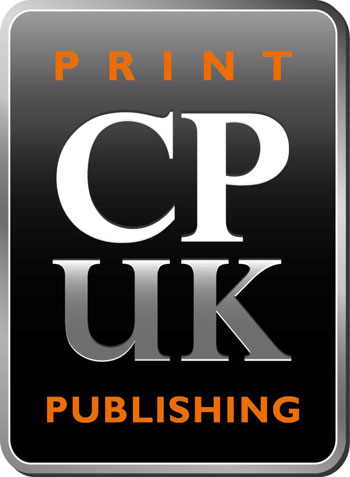
Q: What are the characteristics of a well-designed magazine?
A:
A well-designed, professional magazine should demonstrate design consistency throughout and include impactful covers with creative content that packs a punch to capture your readers’ attention, thereby increasing subscriptions as well as gaining the interest of your advertisers.Here are ten tips to consider:
- Cover Design – Creating an attention-grabbing cover is key to selling your magazine to your readers.
- Images – All images should be high-resolution with balanced light and colour, so the image is clear. Everyone knows a picture can speak a thousand words, so make images the focus of your layouts.
- Infographics – There is no better way to deliver complex content and text-heavy information than illustrating articles with infographics, thereby helping readers to engage with the layout.
- Fonts – Associate font styles that are specific to your magazine genre; use consistent fonts, weights and sizes: for example, sans serifs for a younger trendier audience, serifs for a more luxurious brand.
- Single Colour Usage – Using colour sparingly, with one striking bold colour, can be more effective than lots of different colours.
- Design Templates – Create a theme and style synonymous with the brand and stick to it. Use a consistent theme (eg running headers, borders, folios) throughout the magazine. Create special formats for spreads and go large with photos and imagery.
- Contents Page – The readers’ first port of call before they get to articles and features is the contents page: make sure it’s functional, highlighting easy-to-find articles and therefore selling the magazine’s content to the readers.
- Deliver Creative Content – Every decision on content and design should be made intentionally with your reader in mind, but be creative (eg pull-quotes, 3D layers, aerial shots for food, wrap text around images).
- White Space – Make sure there is not too much text on a page; leaving white space not only makes your design look stylish but also helps to draw the eye to the content you want your readers to focus on.
- Print Consultation – Ensure you marry your content and style with the correct format size, cover and text paper weights, binding and finish. Ensure your print supplier provides you with a like-for-like paper dummy and some printed examples.
Q: What elements of the production process do independent publishers typically struggle with?
A:
The main struggle independent publishers experience is knowing how to prepare the design files. Getting everything right first time from a pre-press perspective is key. Once the following 12 key guidelines are in place, you can be assured you have covered every aspect and will not be disappointed when your magazine is delivered.- Colour Profiles – The colour profiles are relative to your paper stocks: for coated papers use Fogra39 (ISO 12467-2-2004) or uncoated/offset papers use Fogra29 (ISO 12467-2-2004).
- CMYK – The CMYK acronym stands for Cyan, Magenta, Yellow and Key (Black): those are the colours used in the printing process. Any images in RGB must be converted to CMYK before being imported into your design layout application.
- Images – Ensure all images are embedded in the final PDF and saved as CMYK colour space, with the optimum resolution of 300dpi. Monochrome bitmap images (line work) effective resolution 1200dpi.
- Fonts – Again ensure all fonts are embedded in the final PDF, with a CMYK colour space and all transparency flattened.
- Black Text – All body text should be set as 100% black; if you use CMYK blacks, this can cause shadowing on your text when printed.
- PDF Settings – Files should be Adobe Acrobat PDFs to industry standard (PDF-X or Pass4Press).
- Page Dimensions – Ensure you are designing your magazine with the exact image area your printer is expecting; eg an A4 magazine would be 297mm x 210mm – you’ll be surprised how often people get this wrong!
- Cover Files – Some suppliers require single page PDFs for your cover section, some require an outer and inner spread; you will need to consider that the spine width will differ dependent on your pagination, so check with your print supplier each issue.
- Text Files – All print suppliers will require your PDF text files to be submitted as single pages, no spreads.
- Crops & Bleed – A minimum 3mm bleed should be supplied on all pages with crop marks.
- Trim Edge – Folios, text, logos etc should be placed no closer than 5mm from the trim edge (margin). Main body text should fall no closer than 10mm from the trim or spine.
- File Presentation – Ensure your print files are clearly identified when submitting to your printer. Use a file name convention using folio numbers, title name and issue number (eg ABC_issue_page01.pdf). Add a suffix for replacement pages to save confusion (eg ‘V2’ ‘NEW’ or ‘REPLACE’).
Q: For print publishers considering adding a digital edition, what things do they need to consider?
A:
There are a few options for independent publishers when it comes to delivering your magazine content online. Most publishers simply upload optimised print PDFs, but there are options to really enhance your content to deliver an advanced reader experience:- Free digital edition
- Own branded digital edition
- Revenue share app
- Full managed app
A digital edition is an online replica page-turning application into which you can embed live email addresses, web links and video and audio streaming. You also have the opportunity to generate additional revenue streams by adding animated advertising (eg, banner ads) on and off the page.
The more advanced mobile and tablet app is delivered on all major platforms, including Apple, Android, Windows, Amazon, plus more independent newsstands and websites. The good news is by simply uploading your print files online there is additional revenue to be achieved. Publishers can also add revenue streams through sponsored banner adverts and splash pages. But with a little more time and creativity, there’s a whole host of marketing opportunities.
Q: No one likes to miss a typo, missing content, or worse. What are the tricks of the trade when it comes to effective proofreading?
A:
If you are doing something as important as printing a magazine for a large audience, it is worth investing in a professional proofreader so that any minor (or major) editorial issues can be eliminated before a magazine goes to print.A professional proofreader will offer a high level of attention to detail, as well as good spelling, punctuation, and grammar skills. As the final stage in the production process before the magazine goes to print, the proofreader will meticulously read every single word on the page, often spotting mistakes that have been missed by everyone else in the process of putting the publication together.
A proofreader will also check for consistency of style throughout the publication, casting an eye over visual content making sure the columns sit correctly, avoiding widows and word breaks, checking for alignment, and ensuring the overall professional appearance of every page.
By investing in a service such as this, issues within the publication which could potentially cost more can be avoided and a professional feel is guaranteed.
Q: For first-time publishers, what advice do you give them when it comes to formulating a distribution plan?
A:
As an independent publisher, tackling the newsstand process (wholesale and retail) can be daunting, and you are going to need the help of a reputable distribution partner specialising in delivering your publication to your readers via news trade. If you’re not blessed with an in-house circulation specialist, I would recommend hiring a consultant – they’re not as expensive as you may think and will help you develop effective circulation and distribution strategies so that you can achieve your sales goals and maximise every opportunity for your magazine.An alternative option is to target your desired market effectively through the appropriate media channels and create bespoke distribution channels.
Finally on distribution, mailing your subscriptions each issue can be costly, so it’s imperative to find the right methods of fulfilment to ensure your subscribed readers receive their publication promptly and with consistency. A dedicated mailing house, for example, will focus on the most cost-effective postage tariff for your UK and overseas mailing. Also, assigning a dedicated subscription bureau will help you retain your current readers and allow your subscriptions service to grow.
Q: Where should small publishers with limited resources start when it comes to social media?
A:
Whether you use Facebook, LinkedIn, Twitter or Instagram, creating a business page on many social media platforms is completely free of charge! Getting your company out there and providing content that your audience likes is key. Content should be as interactive as possible: using images and videos is a great way to engage an audience. In addition, creating polls and questions generates customer feedback helping you determine exactly what they want from you.In terms of the wording on social media posts, around 20% of the content should be to advertise your business and the services you can provide. The other 80% should be centred around industry news, images, videos, polls and questions.
Make sure you link your different social media platforms together in order to increase your following on all accounts. It is also key that you fill out as much information as possible on these accounts so your audience can learn about your company and the services you can deliver to them. Direct all posts back to either your website or a contact form that potential new customers can fill out. Be sure to include a call to action in all posts!
Q: What’s in the pipeline for CPUK?
A:
Following what has been an undeniably difficult 16 months coping with the pandemic, our customers and the industry as a whole have had to adjust and become more creative. In most cases, although not all, our customers either suspended publishing but successfully returned or carried on regardless (with caution!).Just as we felt the industry was picking up, we faced the news of pending paper price increases. Of course, there are lots of creative ways we can diminish the potential 10% increase being suggested, and in some cases, measures have already been implemented.
Moving forward, we are optimistic for the industry and we’re looking to build positively post-pandemic. For the past 12-18 months, we have embraced the benefits of social media not only for our own business, but building stronger online visibility for our customers, with some fantastic results. We will continue to develop and grow in this area.
We are also currently speaking with a couple of publishers about some new launch titles, which shows that this is a resilient industry with a never-say-die attitude – long live print publishing!
About us

Founded in 2008, CPUK Print Publishing was launched to work with and support specialist and independent magazine publishers. We deliver high-quality print publishing services to customers at any stage of the process – whether you are at the first stages of design and production, need some distribution advice or simply require your title to be printed professionally. The services we offer range from paper and product consultation and cover-to-cover design, right through to general assistance with digital editions and online activity. All the services we offer are bespoke and delivered with a high-quality and professional finish. Our customers benefit from our expertise, saving them valuable time and money. Within our close team, we have more than 30 years of publishing and print-management experience.
Website: www.cp-uk.co.uk
Tel: 01480 861 962










